Akakura Onsen Tourism Association


History
The story of Akakura Onsen
The mountain at the center of the world
When climbing Mt. Myoko was forbidden
The 2,454-meter-tall Mt. Myoko, long a regional symbol and one of Japan’s most famous peaks, was also known as Shumisen. In Buddhist tradition, Shumisen was a flat-topped, tall mountain at the center of the universe. Many felt that Mt. Myoko perfectly fit that image.
Along with nearby Mt. Togakushi in Nagano, and Mt. Hakusan in Ishikawa Prefecture, Mt. Myoko was a place of veneration for Shugendo sects—this being a Japanese religion combining Buddhism, Shintoism, Taoism and other elements. The rites involved mountain worship, but actually climbing the mountain—or participation by women—were forbidden.
Kukai, also widely known as Kobo Daishi, recognized as early as the ninth century that the peak was sacred and used it as a training area. The 13th-century Buddhist monk Shinran supposedly was able to use his sacred vision to see that there was a holy spring on the mountain, but drawing hot water or mining the sulfur found high up the mountain were forbidden.
Prior to the opening of Akakura Onsen in 1816, all of the area of Mt. Myoko was under the control of Sekiyama Sansha Gongen, today’s Sekiyama Shrine, still operating at the base of the road leading to Seki Onsen. The shrine was built as a place for official viewing of Mt. Myoko, and was also a Shugendo training center. While a quiet shrine in the forest today, it was an extremely powerful center in the past, so much so that the feudal government in Takada had no role here, and the shrine ensured that no one was allowed to enter the mountain.
Eventually, though, the shrine’s power waned, and its need for cash allowed for developments such as the opening of Akakura Onsen.

